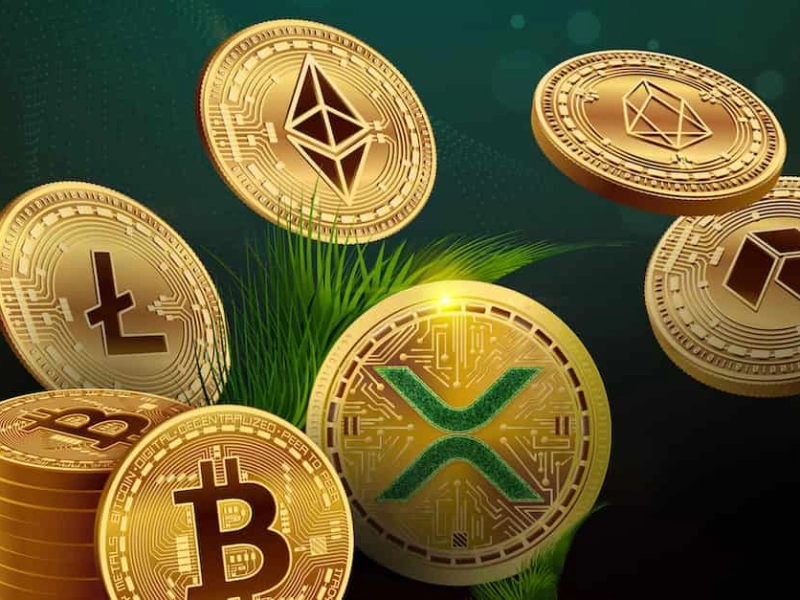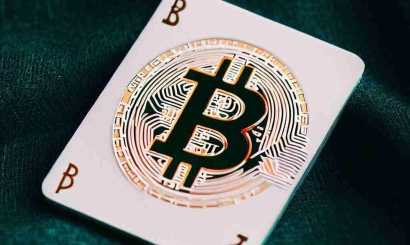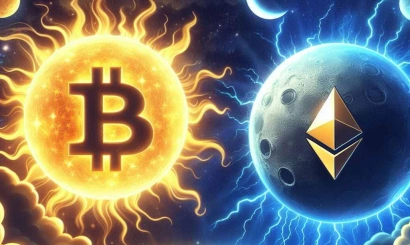Green Investments. How to help the planet by making money from crypto-assets
What is the concept of regenerative finance (ReFi) and what projects help invest to help the environment
How the concept of regenerative finance (ReFi) is organized and what decentralized economic models can help solve environmental problems
The concept of ReFi is a direction of decentralized finance (DeFi) that creates complex and harmonious economic models in which participation in addition to direct material rewards benefits the environment or contributes to solving societal problems.
Restorative or "regenerative" finance, like most Web 3.0 industry terms, has a multi-component and fuzzy definition. Proponents of the concept are trying to solve an important, somewhat utopian problem. The ReFi model is not yet widespread in real-world project development, and only a small number of truly interested participants are still using existing solutions. Nevertheless, the scale of the concept could make the idea of ReFi much more popular over time, and with it, change public attitudes toward cryptocurrencies in general.
A New Understanding of Liquidity
Within the ReFi idea, making a profit when dealing with liquidity is not a goal in and of itself. Instead, the movement of liquidity is understood as a means and a link in the chain to comprehensively address societal, environmental, and scientific challenges. The circulation and movement of capital, rather than its accumulation, is the focus of regenerative finance. With the possible popularization of the idea of ReFi, the cryptocurrency industry has a chance for a renewed image. For the general public, the use of crypto assets may be perceived as disconnected from the "real world" and associated only with speculation on worthless coins for the sole purpose of getting rich quickly.
Traditional methods of financing new projects are too limited to provide a comprehensive solution to existing systemic problems. The increasing inclusion of environmental, social, and management criteria in investment decisions is a positive trend, but the focus so far has been primarily on mitigating the adverse effects of the existence and operation of this or that project. The latter is gradually becoming a trend even for the existing functionality of some platforms.
The decentralized SushiSwap (SUSHI) protocol has recently proposed to make user token swaps environmentally friendly when running on the Polygon network (MATIC). The project works in partnership with KlimaDAO to solve this problem. The project's digital asset (KLIMA) is provided with carbon dioxide reduction offset units. The cost of the green swap will cost less than $0.01 more than a conventional transaction.
Investors focused solely on profits tend to focus on a limited set of goals. They often don't consider how the outcome is achieved, or who ultimately benefits from the realization of what they have in mind. In this respect, ReFi's ideals go along with the aspirations of many modern companies, which, for example, try to minimize harm to the environment and the health of workers in their own production.
Copyright royalties on NFT trading
Most NFT platforms allow you to set a percentage royalty for the tokens issued. The creator of a liquid and actively traded NFT, continue to earn royalties from each transaction. This feature allows ReFi initiatives to be integrated into virtually any NFT collection.
A pre-described formula for using funds in the form of royalties for socially useful tasks or charity gives special meaning to trading tokens from the collection. In this approach, the profitable resale of NFTs solves several problems at once: it makes a profit for the seller, finances a useful initiative, and strengthens the connections between entire ecosystems.
One example of such NFT collections is the TON Animals Red List project. 25% of the value of each transaction is donated to the International Fund for Animal Welfare. The potential of such NFT initiatives is enormous, given the multimillion-dollar daily trading volumes in popular collections on the largest marketplaces. At the same time, the volume of NFT trades can continue to grow as long as desired without the risk of harming the planet: the sale and "production" of NFT does not imply problems with logistics, waste disposal and recycling or ethical problems with exploitation of cheap labor.
To some extent, royalties from NFT projects that adhere to the ReFi concept may remotely resemble a form of taxation. However, unlike taxes in the classical sense, payments are determined in a decentralized way, and their distribution is more transparent and accessible to analysis via blockchain observers or analytics services. Creating formulas for calculating royalties that initially take ReFi's approach into account can help develop a healthy competition for alternative concepts of decentralized voluntaristic "taxation," because NFT collectors are free to decide what tokens they trade.
Active Projects
Blockchain CELO actively uses ReFi's rhetoric in its marketing. The project's community regularly holds meetings both online and by organizing special conferences. Several projects have already been launched on the CELO blockchain. For example, Flow Carbon tokenizes carbon credits to keep track of them on the blockchain, making it easier to return funds to funded projects. Astro Protocol is developing tools to interact with user location data that are available for regenerative financing protocols. Moss is engaged in the protection of the Amazon rainforest, the MCO2 project token allows users to realize the purchase of carbon credits from certified companies operating in the region. It is the use of blockchain that makes the process accessible to ordinary users.
For all the importance of ReFi's concepts, it is too early to talk about the practical usefulness of projects that adhere to the idea of regenerative finance. The main reason is the low interest of the general audience; so far, few people are ready to participate in such initiatives. The daily trading volume in pairs with MCO2 is only $64,000, according to CoinMarketCap, although the token is traded on major cryptocurrency exchanges, including Coinbase. The value of TVL (total blocked value) in the MCO2/CELO pool on the Uniswap exchange was $87 thousand.
- Mastercard will introduce cryptocurrency payments in DeFi services and metacities
- Japan to launch pilot testing of digital currency system in April
- Hackers who stole over $300k fake the website of a major cryptocurrency conference
- "Strong resistance." What will happen to the price of bitcoin in the coming days
- EU authorities have changed their mind about banning anonymous cryptocurrencies
- BIS report: "whales" outbid retail crypto investors
- Buying Ethereum in 2014 brought the Reddit co-founder 548,000% profit




_410x245_00e.webp)


